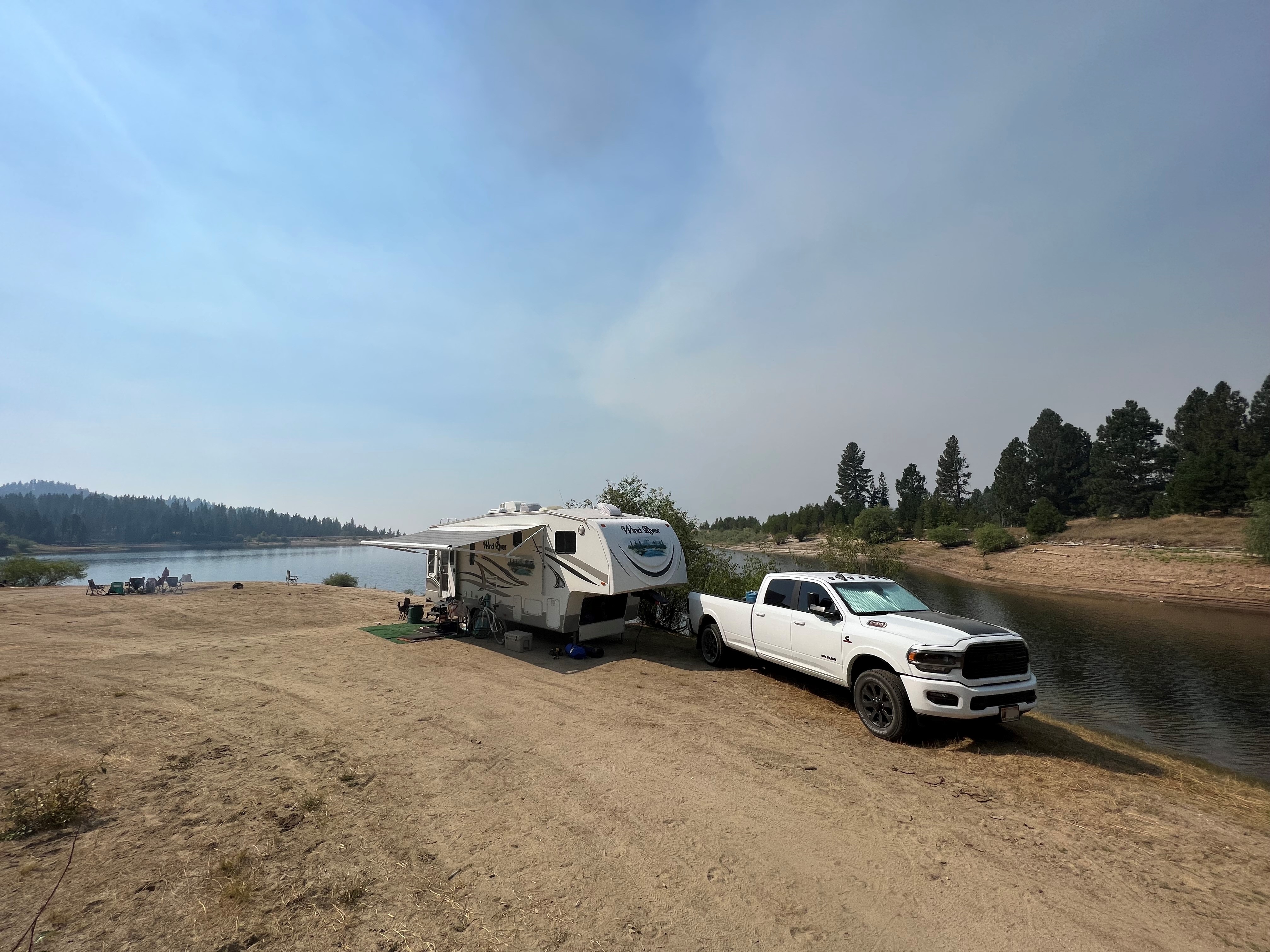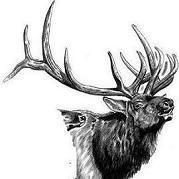
Everything posted by AH64ID
-
Travel Trailers and Taxes
The vehicle taxes are state dependent, even for federal taxes, because of how they are coded. There isn't a penny on the Idaho registration form for anything that is deductible.
-
Efficiency, calculated, FINALLY
The Scan Gauge computes HP based on fuel burn. From what I have read it's pretty accurate, for flywheel power and not rear wheel power. But there must be some conversion factor. Turbo engines are more efficient than NA. I wish I could get all the data for my CR as I can for the QSB 480, but I'll use the QSB 480 data. (I think I am really close to the same total power as the QSB 480 anyhow). Okay, so a gallon of #2 diesel contains 139,200 BTU's. Each hp is equivalent to 2546.098 BTU's. So a QSB 480 which makes 472 bhp is producing 1,201,758 BTU's. The burn rate is 25.7 gal/hr or 3,577,440. For a total efficiency of 33.6%, not too bad. So now using the same math let's look at a QSK50, 50L of marine fury! 1800 bhp burning 91.5 gal/hr, for an efficiency rating of 34.7%. What's interesting on that motor is that it makes 1800 hp from 1700-1900 rpm. The above rating is at 1900 rpms, but at 1700 rpms its 48% efficient! Now that is crazy.
-
Travel Trailers and Taxes
On my old trailer I deducted the interest, and will be doing the same on my new trailer when I do my 2012 taxes. It's a federal deduction for a 2nd home. In some states you can deduct the RV sticker fee because it's labels as a property tax. Well in Idaho it's not, oh well.It's not a big deduction, but it's something.
-
Lock out hub conversion
I am planning on ordering the parts in a few weeks for this. I am going back and forth between the Yukon and Spyntec. They both get excellent reviews, and I have seen the Yukon's in person as my dad has them on his 06. After he bought his the Spyntec's came out with their shorty version, which is very appealing. I originally was leaning towards the Yukon becuase they use Warn hubs, well now they are in-house and have had a few growing pains. Nothing they haven't rectified and modified all the in stock stuff with, but if my dad wasn't local to Yukon it would have been a PITA. Spyntec uses MM hubs, and while I haven't heard anything bad about them I have always been a Warn guy.As for the rating, I am not sure where it all comes from. I think ball joints are a big factor, but I don't know. I am trying to find out why the 10' + trucks are rated at 5500 and the 03-09 are only rated at 5200. There was a u-joint and knuckle change for better steering, but I don't see either of those being the cause for the 300 lbs. I have heard the '13 will be rated at 6K lbs, but it's a very different version of the axle with CAD (BAD RAM, BAD!!!). I am also replacing the ball joints when I do the hubs, and will be going with dynatrac's. The same part number is used for 02-12, so if the BJ is the reason for the lower rating then I should be good to go a little over, as that happens all too easily on these trucks.
-
BHAF Question....
The exhaust back pressure and drive pressure are not the same. As it was stated the drive pressure is the pressure in the exhaust manifold. Ideal is 1:1 or better with boost. So at 40 psi of boost you would want 40 psi or less of exhaust pressure, some turbo's run more (like the stock HE351CW on my 2005) and some run less (like the GT3782R I run now). Back pressure is the pressure in the exhaust between the turbo and the tail pipe, it's not supposed to go over 3" HG. There is a big difference in pre-tubo and post-turbo pressures. Flow is created by pressure drop, so a truck running 30 psi of drive and a 3" exhaust with 5" of HG will have less flow than the same truck with a 4" exhaust and 3" of HG.
-
Turbo Mod
And now you see why I wanted to ditch it! According to Hoslet a 9cm undivided flows about the same as a 12cm divided... but???? Anything with a fixed housing size is not variable, the HE351VE is something like 3-26cm3.
-
Turbo Mod
The HE's found in 5.9 are not variable, HE341 and HE351CW. The HE351VE found on the 6.7 is variable.
-
Turbo Mod
The HE's found on CR's aren't divided either. I wonder if the housing is so small that it's not needed for low end flow. My Garrett is divided.
-
Edge Insight cs
Not enough boost would register with thick black smoke. Is it sluggish?
-
Edge Insight cs
What has your truck been doing?
-
Cold Idle Problems
Glad to hear it!
-
Edge Insight cs
The only issue with the CS vs CTS is screen size, if you are using it as your primary gauges then it may be too small to see the stuff you want to.
-
BHAF Question....
The impact is EGT's, back-pressure, and flow. IIRC Mike drives off of EGT's, as they approach 1200° (I think that's what he said) he will downshift, so with his driving style he may not know if he has too much resistance. 3" of Hg is supposed to be the max backpressure on a turbocharged diesel. The 3" exhaust works fine at low-mid power levels and low-mid rpms, its when your towing heavy, or using additional rpms that the back-pressure can be too great. The fact is that a 4" wont hurt anything down low, but a 3" can hurt performance up top.
-
Cold Idle Problems
Its sounds more and more like an FCA that's sticking.
-
BHAF Question....
It's a BHAF thread, but there is a little discussion on exhaust. Let's look at a few things. While most of use don't run at full power most the time, the engine needs to have all of it's components sized correctly. A HX35 is capable of flowing about 800 CFM, which at 1200° is 2000 CFM of exhaust. That is barely going to flow thru a 4" exhaust with acceptable back-pressure, let alone a 3" exhaust. Specs from Cummins put the QSB 480 turning 3400 rpms at 932 CFM of intake and 2174 CFM of exhaust at a manifold temp of 1301° and 35 psi of boost (boost isn't as relative as CFM as we don't know the cam profile). RPMs aren't relative either, its an equation of intake CFM and exhaust temp. There truly are very few applications where a 3" exhaust is acceptable on a ISB over 250 hp. The 3" exhaust was barely enough on a stock 02 HO, with any sort of mods a 4" is needed. Guys will put 4" intake tubes on their air filters, and leave a 3" exhaust. The exhaust flow is roughly 2.5x that of the intake at 1200°.
-
Cold Idle Problems
Here is a thought, and nothing more. Remove that wire terminal and don't ground it.. maybe it's not supposed to be grounded???But based on the rattle I would think rail pressure, which would make me think the FCA is sticking.
-
Oil Truns Black Quick
I believe it's the piston design. The 04.5-07 uses a non reentrant piston, the only time Cummins has ever done this. The 04.5-07 also runs the dirtiest, appearance wise, oil of any Ram (except a stock 6.7, but a deleted 6.7 is cleaner). The reason I say it's the piston is because of all the things that contribute to the in-cylinder EGR and black oil the piston is the only thing left in my motor. I changed the cam, turbo, timing, and 3rd injection even it gone. If you look at the link below you will see that I got my oil CLEAN, and within 1500 miles it was back to black. I don't know when it happened as I was busy and didn't check it until about 1500 miles after 50 miles. At 50 miles it was barely colored with a tinge of gray. http://forum.mopar1973man.com/threads/6744-Little-experiment-with-BLACK-oil?p=66365#post66365
-
Little experiment with BLACK oil....
Well I got busy and didn't check the oil until it had about 1500 miles on it, and BLACK!!I kinda figured it would go that way, but a small portion of me was hoping. At least now I know, and gave my motor a good cleaning.
-
What causes popping! and WHY
These are pretty simple motors, about the simplest I have ever worked on..Now the tuning of the CR's... that's not simple!
-
Cold Idle Problems
The MAP is near the rail on the intake manifold, the IAT is on the tube between the filter and turbo. I would put a nut on those wires and see what happens.
-
Cold Idle Problems
It could also be as simple as a sensor, MAP or IAT, that tells the ECM the temp isn't what it is and the timing is off. Do you have any gauges? Access to a scanner, Scan Gauge, or Ultra Gauge?It does seem different, but certainly worth checking that wire loom.
-
Cold Idle Problems
How long has it been going on? Could it be a bad tank of fuel? Non-winterized fuel?Do you monitor LP pressure?
-
What causes popping! and WHY
Why not call it TDC? The crank is at the center of the top semicircle for TDC, and BTC is the center of the bottom semicircle.
-
Coolant temp issues
My Cummins 190° does the same. It was cold enough on my drive back from Seattle the other day that on shallow downhills I would run at 186° at 75 mph after running several hours. 180° seems to be the temp that it holds when fully closed at low load, such as idling, slow crawling, or coasting down a long hill. The swing is normal. The 190° thermostats crack at 190° ± 3°, and are not full open until 207°. Because of the over-sized cooling the radiator stays fairly cool/cold in the winter when your not towing so there is a rush of cold coolant into the block when the thermostat cracks, and it takes many mile of driving to stabilize the thermostat at the proper position to maintain temp, and then any power change will effect it. As the thermostats age they develop wear spots because they rarely go full open, in fact until I got my 8K lb TT my thermostat would only go full open a few times a year with my 4.5K lb TT, and that's with about 100rwhp over stock. The cooling system is WAY over-sized, and it's great. Anyways, the wear spots make them slower to react and reduce the ability to smoothly open. When I changed my OEM thermostat at 55K miles the difference was night and day. I went with a Cummins stat as I have heard of too many issues with non-Cummins ones. Anyways, as to running 180° on a 195° thermostat, how long had you been driving? I suppose it's possible that NAPA is rating the full open temp, not the crack temp like OEM does. The OEM 180° thermostat is full open at 198°.
-
What causes popping! and WHY
It's defiantly interesting. I would think that if the timing were retarded enough to cause that late of a flame you couldn't rev that high on a single injection event motor. The only reason a CR can run such retarded timing is because of the pilot injection. At 2,000 rpms the WOT timing is -5.8°, and it's making at least 210/555 at the crank.



